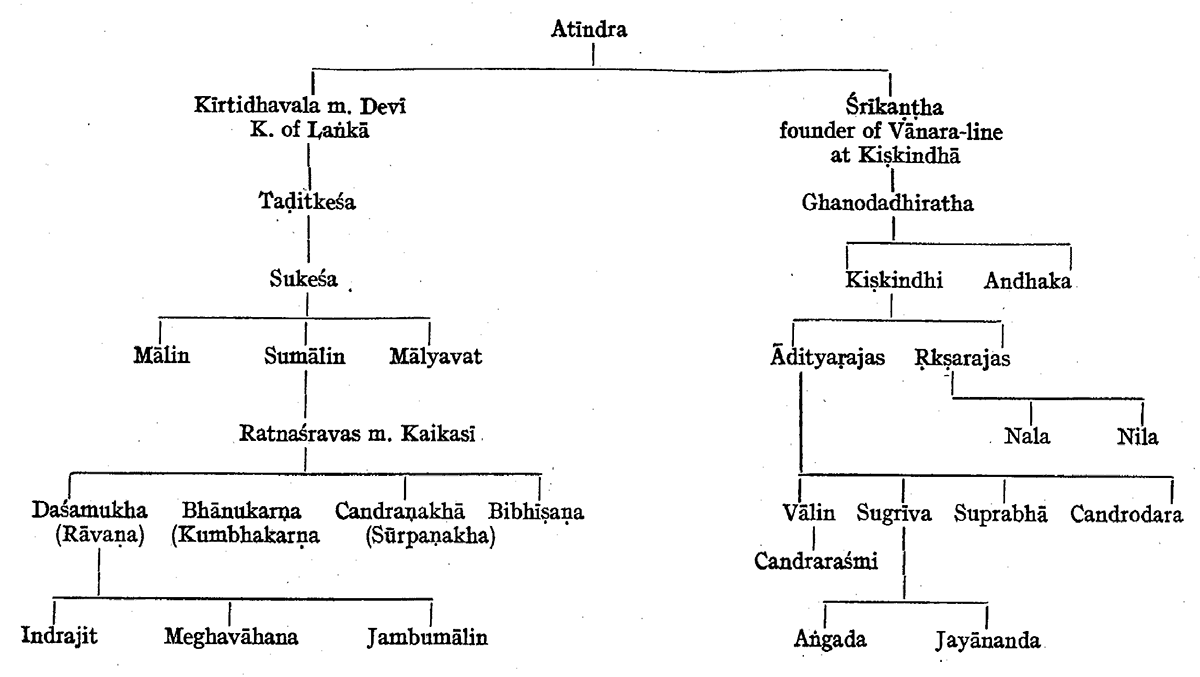Trishashti Shalaka Purusha Caritra
by Helen M. Johnson | 1931 | 742,503 words
This is the English translation of the Trishashti Shalaka Purusha Charita (literally “The lives of the sixty-three illustrious People”), a Sanskrit epic poem written by Hemachandra in the twelfth century. The work relates the history and legends of important figures in the Jain faith. These 63 persons include: the twenty four tirthankaras , the t...
Introduction to volume 4
Book VI of the Triṣaṣṭiśalākāpuruṣacaritra includes the biographies of two Tīrthaṅkaras who were also cakravartins, of two Cakravartin, Balabhadras, Vāsudevas, and Prativāsudevas each.
Kunthunātha and Aranātha are comparatively obscure and not popular with authors of the Tīrthaṅkaras’ biographies. Hemacandra’s biographies are routine and brief. It is only the story of Vīrabhadra, which is introduced into Aranātha’s biography, that lends interest to it.
Mallinātha is outstanding as the only woman Tīrthaṅkara and is fairly popular as a biographical subject. The reason she was born as a woman is in itself interesting and strictly Jainistic.
Munisuvrata is perhaps better-known to the faithful than Kunthunātha and Aranātha, but his life as described by Hemacandra was uneventful. An account of the origin of the Harivaṃśa and a short story about an enlightened horse redeem the biography from complete aridity. All the biographies contain sermons invaluable for the comprehension of Jainism.
The biography of Cakravartin Subhūma includes the story of the destruction of the kṣatriyas by Paraśurāma and that of Brāhmans by Subhūma. This version differs greatly from Hindu epic versions. The story of the ‘three steps’ saves the biography of Cakravartin Mahāpadma. Hemacandra’s version of the ‘three steps’ also differs markedly from the epic one.
The biographies of the two Balabhadras, Vāsudevas, and Prativāsudevas are stereotyped and of little interest.
The first ten chapters of Book VII constitute an elaborately detailed Jaina Rāmāyaṇa. This includes the lives of Rāma, the eighth Balabhadra, of Lakṣmaṇa, the eighth Vāsudeva, and Rāvaṇa, the eighth Prativāsudeva. Naturally, it is very different from the Hindu Rāmāyaṇa. Other Jain versions are discussed in the article, The Jaina Rāmāyaṇas, by D. L. Narasimhachar.
Chapter XI of Book VII is a brief routine biography of Naminātha. Chapters XII and XIII are stereotyped accounts of the tenth and eleventh Cakravartin.
I append a genealogical table of the principal characters of the Rāmāyaṇa.

Atīndra
Kīrtidhavala m. Devī (K. of Laṅkā)
Taḍitkeśa
Sukeśa
Mālin,
Sumālin,
Mālyavat
Ratnaśravas m. Kaikasī
Daśamukha (Rāvaṇa),
Bhānukarṇa (Kumbhakarṇa),
Candraṇakhā (Sūrpaṇakha),
Bibhīṣaṇa
Indrajit
Meghavāhana
Jambumālin
Śīkaṇṭha (founder of Vānara-line at Kiṣkindhā)
Ghanodadhiratha,
Kiṣkindhi
Andhaka
Ādityarajas,
Ṛkṣarajas
Nala
Nila
Vālin
Sugrīva
Suprabhā
Candrodara
Candraraśmi
Aṅgada
Jayānanda
